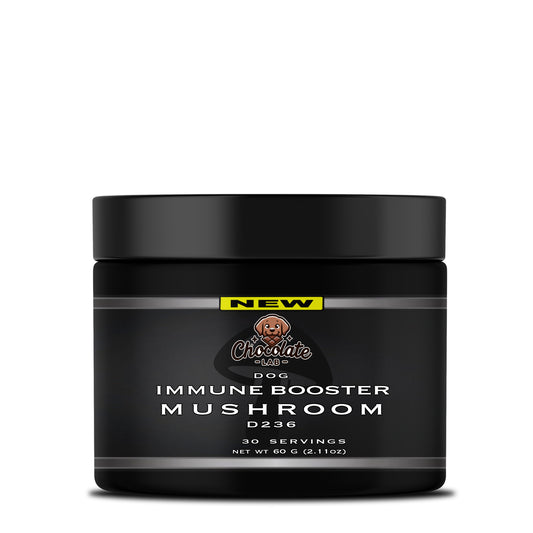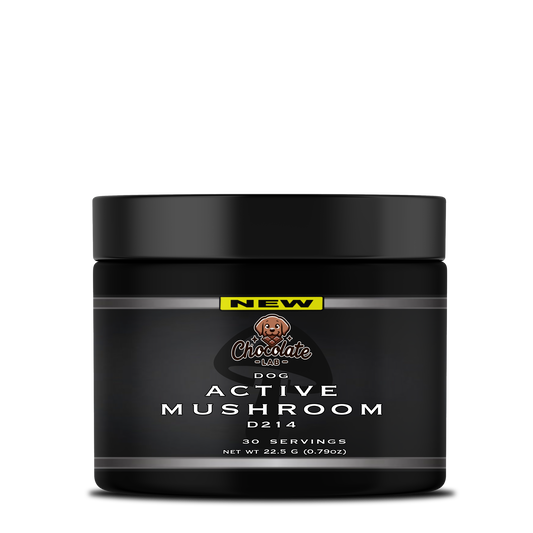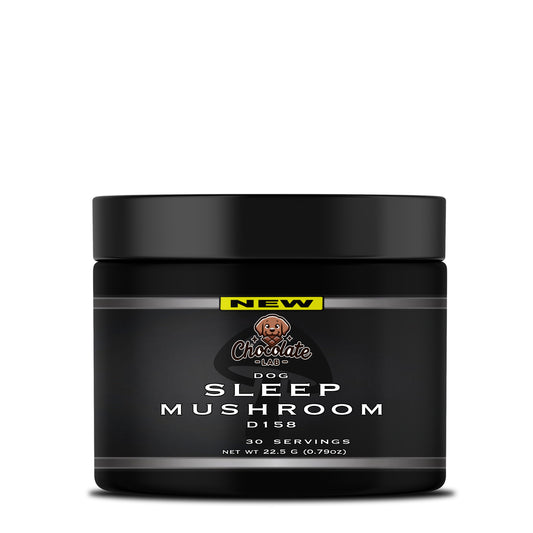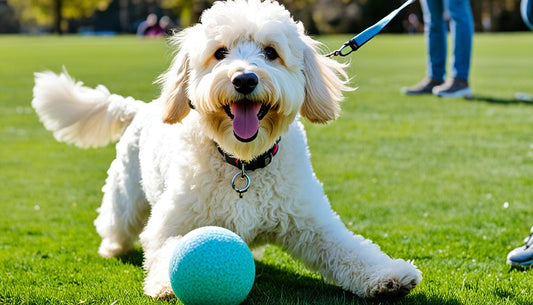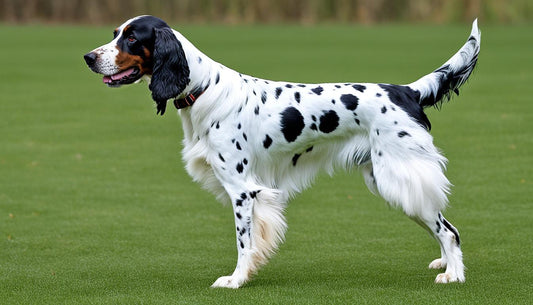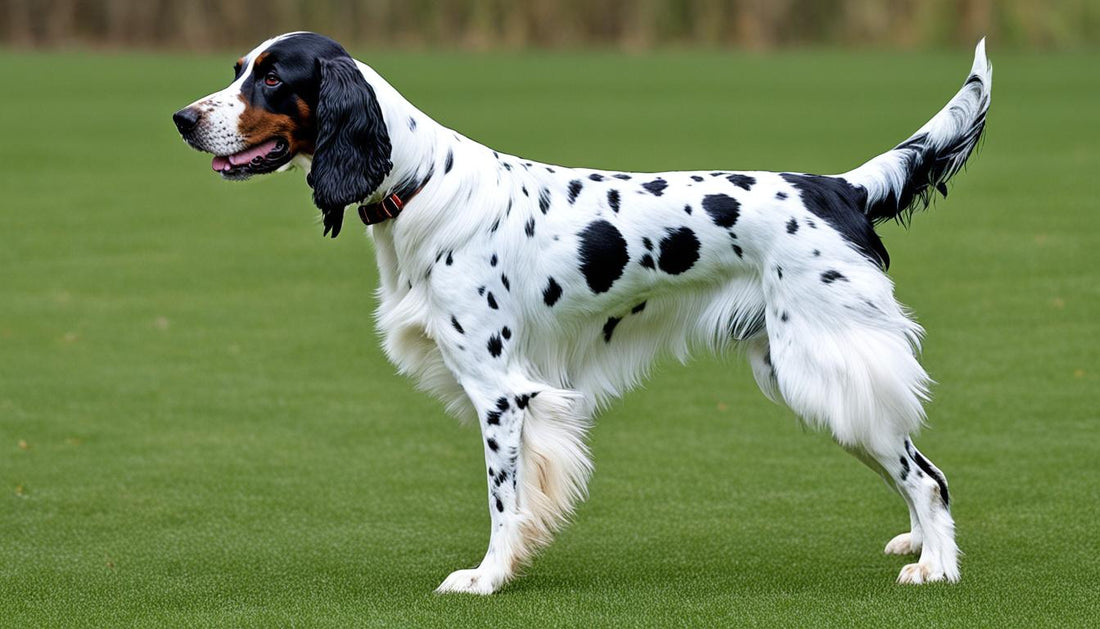
Llewellin Setter - Dog Breed Information, Puppies & More
Llewellin Setter - Dog Breed Traits, Care, and Training

Famed for their unparalleled prowess in bird hunting, the Llewellin Setter breed represents a lineage of graceful athleticism and unwavering loyalty. Yet, despite their sterling qualities, they remain a choice known chiefly to those within the hunting sphere. This breed's fascinating origin, exceptional traits, and the comprehensive approach to their care and training paint a picture of a dog that is as complex as it is captivating. For enthusiasts and potential owners alike, understanding the intricacies of the Llewellin Setter care and the subtleties of Llewellin Setter training is crucial to unlocking the full potential of these distinguished canines. Let's venture together into the world of the Llewellin Setter, exploring what makes this particular strain of the English Setter so special and how to cultivate a thriving partnership with this exceptional breed.
Key Takeaways
- Discover the rich history and distinctive qualities of the Llewellin Setter breed.
- Learn about the dedicated care that ensures the health and happiness of a Llewellin Setter.
- Uncover effective training methods tailored to this breed's intelligence and natural abilities.
- Gain insights into the deep-rooted hunting instincts of the Llewellin Setter.
- Understand the importance of proper nutrition, exercise, and grooming in maintaining the breed's well-being.
- Recognize the benefits of forming a strong bond through consistent and compassionate training.
An Introduction to the Llewellin Setter
Within the sporting dog community, the Llewellin Setter dog stands out not merely as a member of the field but as the epitome of agility, intelligence, and fidelity. This dog breed, often distinguished from the broader category of English Setters, owes its lineage to dedicated breeding practices aimed at preserving the traits most cherished by hunters and dog enthusiasts alike.
As we delve into the rich history and defining characteristics of this esteemed breed, it becomes apparent why the Llewellin Setter has garnered a dedicated following. They offer an exceptional blend of companionship and working capabilities that is highly valued in a variety of settings, from the heath-laden moors of their ancestry to the diverse landscapes they traverse today.
Origin and History
The ancestry of the Llewellin Setter dog is as storied as the landscapes they adorn. Developed in the 19th century, these canines were endearingly named after the innovative breeder Mr. R.L. Purcell Llewellin. His selective breeding program propelled what was a distinct working strain of the English Setter into a new echelon of ability and recognition. It was Llewellin's dedication to refining the breed's hunting acumen that cemented their place in the annals of canine history.
Defining Characteristics of the Breed
The dog breed Llewellin Setter is admired for more than its storied past; it is their present-day traits that truly capture the hearts of many. Esteemed for their remarkable hunting abilities, the Llewellin Setter excels in both field and forest. Their prowess is matched by a loyalty that fosters deep bonds with their handlers, and an intelligence that facilitates both ease of training and adaptability to various challenges they may face.
| Hunting Prowess | Loyalty | Intelligence |
|---|---|---|
| Outstanding scenting and pointing instincts | Deeply committed to their human companion | Quick learner, easily trained |
| Agile and energetic, with great stamina | Protective and affectionate nature | Exceptional problem-solving abilities |
It is the combination of these Llewellin Setter characteristics that not only sets them apart from other setter breeds but also exemplifies their appeal as both working dogs and loyal members of the family. The dog breed Llewellin Setter continues to be the choice of discerning enthusiasts who seek a multifaceted canine companion capable of meeting the demands of an active lifestyle.
Distinctive Physical Traits of the Llewellin Setter

Admired for their elegance and robust construction, the physical attributes of the Llewellin Setter make them a standout breed among hunting dogs. With a physique that is as aesthetically pleasing as it is functional, these medium-sized canines possess the strength and stamina needed to excel in both competitive environments and on the hunting grounds. Prospective owners of llewellin setter puppies and those reaching out to llewellin setter breeders will benefit from understanding the breed's unique physical characteristics. It is through this knowledge that one can truly appreciate the beauty and athleticism inherent in the Llewellin Setter.
Size and Build
The Llewellin Setter boasts a muscular structure that underpins their agile movements. Typically weighing between 35 to 55 pounds and standing up to 24 inches at the shoulder, they are considered medium-sized dogs. This build contributes to their remarkable endurance and speed, traits essential for the field.
Coat Colors and Patterns
One of the most defining features of the Llewellin Setter is their coat, which exhibits a variety of colors and patterns. The breed's coat is generally short to medium in length with feathering on the legs and tail. Common color patterns include white paired with black, liver, orange, or even tri-color—where ticking or mottling adds to their distinct appearance. These versatile and vibrant coat patterns are not just for show; they also help camouflage and protect the dogs during hunts.
Recognizing a Purebred Llewellin Setter
When selecting llewellin english setter puppies, it is vital to recognize the signs of purebred lineage. Purebred Llewellin Setters possess certain breed-specific traits like the classic 'belton' pattern—a unique speckled coat—along with the physical characteristics previously mentioned. Certification from established kennel clubs and pedigrees from the breeder can also provide verification of a purebred Llewellin Setter.
Dedicated towards perpetuating the breed's legacy, responsible llewellin setter breeders will ensure that their dogs not only embody the visual hallmarks of the breed but also uphold the health and temperament standards that make the Llewellin Setter such an esteemed companion in the field and at home.
Understanding the Llewellin Setter Temperament

The temperament of the Llewellin Setter is a vibrant tapestry of affection, intelligence, and instinctual behaviors that make them not only exemplary hunting dogs but also devoted companions. Renowned for their amicable nature, these dogs fit seamlessly into the family dynamic, fostering bonds not just with their human counterparts, but also with other household pets.
Social Behavior with Humans and Pets
One of the most endearing qualities of the Llewellin Setter is their sociability. As a breed known for its gentle disposition, Llewellin Setters exhibit a warm and friendly attitude towards humans, from the smallest of toddlers to the eldest in the family. This congenial nature extends to other animals as well, making them suitable co-residents with a range of pets. Their well-balanced temperament means they are less prone to aggressive tendencies, preferring the role of a peacemaker within the companion animal hierarchy.
Instinctual Hunting Traits
The Llewellin Setter hunting prowess is more than a learned skill; it is a natural-born instinct. With a heightened sense of smell and a steady 'point', a Llewellin Setter in the field is both a spectacle to behold and an asset to hunters. They are able to work for long periods, demonstrating an impressive combination of focus and stamina that stems from their origins as a gun dog bred specifically for such tasks. Whether navigating dense covers or vast open fields, their hunting traits are evident and valued by sportsmen and women across the globe.
Llewellin Setters as Family Dogs
Thanks to their adaptable nature, Llewellin English Setters are as much at home in the field as they are curled up on a living room floor. Their ingrained temperament facilitates their dual role, enabling them to switch off their intense field focus and become gentle and docile family members. Owners value their ability to integrate into the family unit, providing loyalty, protection, and affection. The duality of their nature makes them the perfect companion for active families who appreciate both outdoor adventures and tranquil domestic moments.
Llewellin Setter Care Essentials

Caring for Llewellin setter puppies and adults requires a blend of attention, affection, and consistent routines to ensure their health and happiness. Proper llewellin setter care focuses on several pillars: a balanced diet, ample exercise, and regular health check-ups. Each of these components plays a vital role in maintaining the dog's sleek physique and jovial spirit. We'll delve into the foundational care routines that should become a part of your Llewellin Setter's everyday life, ensuring that your canine companion thrives under your guardianship.
Understanding the unique needs of your Llewellin Setter is key to crafting a care plan that will allow them to live a long, joyful, and healthy life.
Daily Care: A happy Llewellin Setter begins each day with a routine that caters to their physical and mental needs. Daily care includes feeding high-quality food that supports their energy levels, thorough grooming to keep their coat in top condition, and engaging in exercise that both stimulates and expends their boundless energy.
- Feeding: Provide meals rich in proteins and nutrients tailored to their life stage.
- Grooming: Regular brushing to prevent matting and to keep their coat shiny.
- Exercise: Daily walks, playtime, and training sessions to keep them fit and content.
Monthly Care: Beyond daily upkeep, llewellin setters benefit from a few monthly care practices that safeguard their health and ensure they remain at their best.
- Veterinary Check-ups: Regular appointments to monitor health and receive vaccinations.
- Parasite Control: Administration of preventative treatments for fleas, ticks, and heartworms.
- Nail Trimming: Regular trims to prevent overgrowth which can be painful and cause problems while they trot or run.
Seasonal Care: Seasonal care takes into account the changing weather patterns and how they affect your Llewellin Setter's lifestyle and health needs.
- Summer: Ensure access to shade and plenty of water to avoid overheating during activities.
- Winter: Provide warm shelter and maintain their exercise routine despite colder temperatures.
- All Seasons: Adjust food intake and exercise as needed to prevent weight gain or loss.
The following table provides a helpful overview of the essential care activities that should be regularly observed:
| Daily Activities | Monthly Routine | Seasonal Adjustments |
|---|---|---|
| 2 balanced meals per day | Veterinarian visits | Summertime cooling strategies |
| Teeth and coat brushing | Administer flea & tick prevention | Wintertime warmth management |
| Minimum 1 hour of exercise | Trim nails to a comfortable length | Diet and exercise adjustments |
Fulfilling the role of a Llewellin Setter caretaker bestows upon you the joyous responsibility of nurturing a life. These guidelines serve as a fundamental framework, but remember: your Llewellin's unique personality and needs will shape the finer details of your care practices. With dedication and understanding, you will foster a rewarding bond that will enhance both your lives.
Nutritional Needs for a Healthy Llewellin Setter

Ensuring a balanced and nutritious diet is an essential aspect of maintaining the overall llewellin setter health. Recognizing the right combination of ingredients and meal portions can have a profound impact on your Llewellin Setter's vitality and well-being. Here, we'll explore the vital nutritional elements that contribute to an optimal llewellin setter diet.
Dietary Considerations
High-quality proteins are crucial for muscle development and repair, especially for a breed as active as the Llewellin Setter. Fats provide necessary energy and support healthy skin and coat, while a measured quantity of carbohydrates ensures sustained energy throughout the day. Vitamins and minerals should also be present in the diet to support immune system health and to prevent dietary deficiencies. It's essential to select a diet formulated to meet the needs of active, medium-sized dog breeds.
Feeding Schedule and Portion Sizes
Regular feeding times not only provide structure for your dog but also aid in digestion and weight management. Adult Llewellin Setters typically thrive on two meals per day. The portion size should be tailored based on the dog's size, age, and activity level to prevent obesity, which can contribute to joint issues and other health problems.
The following table offers guidance on meal portions and feeding frequency, which are essential to keep in mind when crafting an appropriate diet plan for your Llewellin Setter:
| Life Stage | Meal Frequency | Portion Size |
|---|---|---|
| Puppy (2-12 months) | 3-4 meals per day | 1/2 to 1 cup per meal |
| Adult (1-8 years) | 2 meals per day | 1 to 1 1/2 cups per meal |
| Senior (8+ years) | 2 meals per day | 3/4 to 1 cup per meal |
| Active/Working Dogs | 2-3 meals per day | 1 1/2 to 2 1/2 cups per meal |
Monitoring your Llewellin Setter's response to their diet, along with regular vet check-ups, is an excellent way to ensure they're receiving the right amount of nutrition. A well-fed Llewellin Setter is better equipped to maintain an active lifestyle, show resilience in the field, and radiate good health for years to come.
Exercise Requirements for a Llewellin Setter

Renowned for their spirited energy and innate hunting abilities, Llewellin Setters require ample exercise to maintain their robust health and cheerful disposition. Fulfilling the Llewellin setter exercise needs is not just about physical health—it's also key to their mental well-being. Engaging in a variety of activities helps channel their energy positively and keeps their intelligent minds occupied. Here's how to keep your Llewellin Setter both physically agile and mentally sharp.
Types of Exercise
When it comes to Llewellin setter training and exercise, diversity is the spice of life. A satisfying regimen includes:
- Aerobic exercises like running or swimming to build stamina and strengthen the cardiovascular system.
- Agility training to enhance their natural athletic prowess and to improve coordination.
- Fetch and frisbee games that satisfy their need to chase and retrieve, tapping into their hunting instincts.
- Hiking, which not only provides a rigorous physical workout but also offers ample opportunity for sensory enrichment.
Generally, adult Llewellin Setters thrive with at least one to two hours of exercise daily, but puppies and seniors may require adjustments to this schedule.
Keeping Your Dog Engaged and Active
Consistency is key in any exercise regimen, but to truly cater to a Llewellin Setter's needs, one must go beyond the physical. Mental stimulation is just as important as physical activity. Introducing puzzle toys, scent work, or hide-and-seek games can mentally challenge and tire your dog in the best way possible.
Below is a table showcasing a weekly exercise plan designed to keep your Llewellin Setter engaged, active, and healthy:
| Day of the Week | Physical Exercise | Mental Stimulation |
|---|---|---|
| Monday | Morning run, evening walk | Puzzle feeder at mealtime |
| Tuesday | Agility training session | Obedience practice with new commands |
| Wednesday | Off-leash play in a secure area | Fetch with a scented toy |
| Thursday | Hike on a new trail | Hide-and-seek with treats |
| Friday | Fetch/frisbee game in a park | Training session with trick-learning |
| Saturday | Swimming session | Interactive play with another dog |
| Sunday | Rest day with gentle stretching | Chew toy for passive engagement |
A committed approach to a Llewellin Setter's exercise needs, incorporating both physical and mental challenges, will lead to a satisfied and well-behaved companion. It is the variety, consistency, and intensity of these activities that will ensure your Llewellin Setter is the happiest and healthiest they can be.
Health and Longevity of Llewellin Setters

The Llewellin Setter, a breed marked by its impressive field performance and engaging personality, also brings with it certain health considerations that owners should be aware of. Understanding these Llewellin setter health issues is pivotal for maintaining their quality of life and ensuring a maximized Llewellin setter lifespan. By addressing the breed's predisposition towards certain genetic conditions, following a regime of regular veterinary care, and acknowledging the factors that contribute to their longevity, owners can help these cherished companions lead a full and healthy life.
Common Health Issues
Like many purebred dogs, Llewellin Setters may be inclined to suffer from specific hereditary health problems. Hip dysplasia, an abnormal formation of the hip socket that can cause lameness and arthritis, is one such concern. Moreover, ear infections can be frequent due to their floppy ears, which may trap moisture and bacteria. Hearing problems, including congenital deafness, have also been noted within the breed. Owners should monitor for symptoms such as reluctance to exercise, difficulty getting up, and any signs of discomfort or hearing loss.
Regular Veterinary Check-Ups
Proactive health monitoring through regular check-ups with a veterinarian is indispensable for any dog breed, including the Llewellin Setter. These appointments are critical opportunities to catch potential health issues early on. A vet can conduct physical examinations, recommend appropriate diagnostic tests, and ensure that vaccinations are kept up to date. Preventative care, like routine dental cleanings and parasite control, is additionally crucial for sustaining the health and comfort of these active canines.
Lifespan Expectations
Llewellin Setters are generally known for their robustness and can live relatively long lives for a medium-sized breed. On average, a well-cared-for Llewellin Setter might enjoy a lifespan of around 10 to 12 years. However, longevity is influenced by numerous factors, including genetics, nutrition, level of exercise, and the overall quality of care they receive throughout their life. By catering to their specific health needs and ensuring a nurturing environment, owners can aid in promoting a long and fulfilling life for their Llewellin Setter companions.
The Llewellin Setter's Grooming Needs

To maintain the health and appearance of your Llewellin Setter, a consistent grooming regimen is essential. Beyond enhancing their striking looks, proper grooming practices play a crucial role in preventing skin irritations and other health issues. With a few key concepts and a regular schedule, you can ensure your Llewellin Setter's coat care contributes to their overall well-being and showcases their natural beauty.
Coat Maintenance and Brushing
Regular brushing is paramount for the Llewellin Setter's coat care. Their unique coat may be prone to matting if neglected, which is why incorporating a routine of brushing a few times a week is recommended. Using tools like a bristle brush or slicker can help maintain the integrity of their beautiful coat, remove loose hair, and distribute skin oils throughout their fur.
| Brushing Tool | Frequency | Benefits |
|---|---|---|
| Bristle Brush | 2-3 times per week | Stimulates skin and distributes natural oils |
| Slicker Brush | As needed to detangle | Helps remove tangles and prevent matting |
| De-shedding Tool | During shedding seasons | Reduces excess hair and allergens |
Bathing and Nail Care
While the Llewellin Setter does not require frequent baths, setting a schedule for bathing every few months or when they get particularly dirty can keep their coat in pristine condition. Always use a mild dog shampoo to protect their skin. Nail trimming is another critical aspect of grooming—long nails can cause discomfort and even lead to issues with walking. Invest in a quality nail clipper or grinder and aim for a trimming session once or twice a month.
Ear Cleaning and Dental Hygiene
Due to their floppy ears, Llewellin Setters are more susceptible to ear infections. Regular ear cleaning with a vet-approved solution can prevent the buildup of wax and bacteria. Additionally, dental hygiene should not be overlooked; brushing teeth several times a week with canine toothpaste helps prevent tartar buildup and promotes healthy gums.
Staying on top of your Llewellin Setter's grooming will not only keep them looking their best but also enhance your bond with them. Remember, a well-groomed Llewellin is a happier and healthier companion ready to accompany you on life's adventures.
Effective Training Techniques for Llewellin Setters

Thanks to their innate intelligence and desire to please, Llewellin Setters are an ideal breed for engaging in various forms of training. From basic commands to advanced hunting skills, there are Llewellin setter training techniques that cater to their eagerness to learn and their natural instincts. In this guide, we delve into the essentials of training these enthusiastic canines, ensuring that they not only excel in their traditional roles but also emerge as well-behaved and sociable family pets.
Obedience Training Basics
Obedience training lays the groundwork for a harmonious relationship between you and your Llewellin Setter. It is crucial to start with fundamental commands that build discipline and respect. Here are some effective obedience training tips:
By incorporating these Llewellin setter obedience training techniques, owners can improve communication with their dogs and create a responsive relationship.
Hunting Training Tips
Refining the natural hunting talents of a Llewellin Setter requires patience and specialized training. Here's how to tap into their potential:
Honing these skills will enhance your Llewellin Setter's field performance, making them a valued partner during hunting excursions.
Behavioral Training and Socialization
Early behavioral training and socialization form the cornerstones of developing a well-adjusted Llewellin Setter. It's essential to:
Socialized Llewellin Setters tend to adapt better to different situations and display a more balanced temperament. By applying these techniques, owners can ensure their dogs become well-mannered and sociable companions, both at home and out in the field.
Achieving harmony and effectiveness in Llewellin setter training techniques often requires a patient, consistent, and multifaceted approach. However, the rewards of a well-trained Llewellin Setter far outweigh the efforts, establishing a bond of mutual respect and companionship destined to last for years to come.
Llewellin Setter Puppies: What to Expect

Embarking on the journey of bringing a Llewellin Setter puppy into your home is an exciting endeavor filled with affection, playfulness, and a touch of preparation. Prospective owners looking for llewellin setter puppies for sale should prioritize partnering with a llewellin setter breeder who upholds the highest standards in health, temperament, and ethical breeding practices. In addition, preparing your home for the new arrival and undertaking llewellin setter puppy training are equally important for a smooth transition and a well-rounded adult dog.
Choosing a Reputable Breeder
Finding a responsible llewellin setter breeder is the first critical step towards welcoming a healthy and well-tempered puppy. Reputable breeders conduct genetic health screenings and offer transparency about the puppy's lineage and health records. They should welcome visits to their facility, allow you to meet the puppy's parents, and answer all your questions thoroughly. A trustworthy breeder will also be interested in the kind of home you'll provide and may ask for references or require a contract.
Preparing Your Home for a Puppy
Once you have pinpointed the perfect llewellin setter puppies for sale, it's time to puppy-proof your home. This involves securing hazardous items, creating a designated space for the puppy, and investing in quality puppy gear such as a comfortable crate, chew toys, and bedding. Establishing a 'puppy zone' with easily cleanable surfaces and puppy gates can help minimize accidents during house training.
Early Training and Socialization
Early llewellin setter puppy training is paramount for developing good behavior and a strong bond with your dog. Focus on housebreaking, crate training, basic commands like sit, stay, and come, as well as leash training. Expose your puppy to a variety of people, environments, and other animals to ensure well-rounded socialization. A puppy class can be a beneficial complement to your training efforts, teaching social skills and obedience in a group setting.
The key to raising a healthy Llewellin Setter puppy lies in the careful selection of a reputable source, deliberate preparation of your living space, and the investment of time and love into their early development. Through thoughtful planning and consistent training, your energetic setter puppy will grow into a cherished companion, enriching your life with their distinctive charm and versatile abilities.
Adopting a Llewellin Setter: Rescue and Adoption

When considering welcoming a Llewellin Setter into your home, adoption presents a heartwarming alternative to purchasing a puppy. Adult dogs in shelters and rescue organizations, often already house-trained and past the challenging puppy stage, are awaiting a chance for a loving home. Delving into llewellin setter adoption can be a rewarding journey—one that gives a second chance to a deserving dog while offering myriad benefits to the adopter.
Benefits of Adopting an Adult Dog
Adopting an adult Llewellin Setter comes with several advantages. Mature dogs tend to be calmer and less demanding than their younger counterparts. They often require less supervision and are capable of holding a steadier routine. Also, adult setters usually come with known personality traits, making it easier to match them with the right family or living situation. Not to be overlooked, the emotional gratification of providing an older dog with a loving forever home is immeasurable.
Rescue Organizations and Shelters
Several organizations are dedicated to the llewellin setter rescue, focusing on the rehabilitation and rehoming of these specific breeds. Seeking a Llewellin Setter through these venues ensures that you are supported by groups familiar with the breed's needs and characteristics. Rescue organizations often provide a health history and can facilitate a match that considers both the dog's background and the adopter's lifestyle.
What to Consider Before Adoption
Before embarking on the path of llewellin setter adoption, it is vital to evaluate several aspects to ensure the best outcome for both the dog and the adopter. The dog's past experiences may shape their behavior, and understanding their history is significant. Consider the potential medical care the dog may require, as adult dogs might have specific health needs. Reflect on the time needed for the dog to adjust to a new home and family, and prepare to offer patience and training to help them acclimate to their new environment.
In summation, llewellin setter adoption is an act of kindness that can deeply enrich the lives of both the dog and the adopter. By taking the time to understand the advantages, working with specialized rescue groups, and considering critical factors before adoption, you can make a well-informed decision that leads to a loving and lasting companionship.
Llewellin Setter Hunting Skills and Training
The Llewellin Setter's reputation as a consummate hunting dog is well-earned. With a heritage steeped in fieldwork, these dogs come equipped with an impressive array of hunting skills. Recognized for their exceptional talent in the sport, Llewellin Setters combine agility, endurance, and a natural inclination for the hunt. Training these skilled canines involves tapping into their innate abilities and enhancing their responsiveness through effective and positive techniques. This section navigates the fundamentals of harnessing the Llewellin Setter's hunting prowess, ensuring they reach their highest potential as a sporting companion.
Hunting Instincts and Training
Llewellin Setters are renowned for their inherent hunting instincts, which lay a natural foundation for their effectiveness in the field. These innate abilities make the breed an obvious choice for sportsmen seeking a top-tier hunting partner. Proper training for hunting amplifies these instincts and focuses the dog's skills for practical use. Training regimes guide the Llewellin Setter's natural pointing and retrieving inclinations into disciplined behaviors that align with a hunter's needs. By understanding and working with their instincts, trainers can channel the Llewellin's capacity for scenting, stamina, and agility into a finely tuned hunting strategy.
Working with a Llewellin's Natural Abilities
Successful Llewellin Setter training for hunting considers the breed's physical and mental characteristics. These dogs thrive on the mental stimulation that tracking and retrieving provide, and their bodies are built for the rigors of lengthy fieldwork. Incorporating exercises that simulate real hunting scenarios benefits the Llewellin Setter, as it engages their body and intellect in equal measure. Practices such as mock hunts, scent work, and field trials exploit a Llewellin Setter's natural propensities, ensuring these dogs are not just physically prepared but also mentally primed for the hunt.
Utilizing Positive Reinforcement in Training
Positive reinforcement is a cornerstone of modern dog training, proving equally effective in honing llewellin setter hunting skills. Celebrating successes with treats, praise, or play makes the learning process enjoyable for the dog, fostering a willing and eager attitude toward training. This method encourages the Llewellin Setter's engagement and trust, which are essential when encountering challenging environments or game. When positive reinforcement is applied consistently, it bolsters the Llewellin Setter's confidence and reliability, fashioning a hunting partner that's not only proficient but also a pleasure to work alongside in the field.
FAQ
What defines the Llewellin Setter breed?
The Llewellin Setter is a particular strain of the English Setter, known for its excellent bird hunting skills, intelligence, loyalty, and distinguishing physical characteristics such as a medium build and various coat colors, often including tri-color combinations.
How does the Llewellin Setter differ from other English Setters?
Llewellin Setters are often considered a "work strain" within the broader English Setter breed. They were specifically developed for their superior abilities in the field and may exhibit more pronounced hunting instincts and endurance than other English Setter varieties.
What is the temperament of a Llewellin Setter like?
Llewellin Setters are known for their affectionate, friendly, and sociable temperament. They get along well with humans and other pets, and while they are excellent hunters, they also make loving and gentle family dogs.
What are the exercise requirements for a Llewellin Setter?
Llewellin Setters are energetic dogs that require regular exercise to stay healthy and content. They benefit from activities like long walks, runs, agility training, and simulated hunting exercises to meet their physical and mental stimulation needs.
What kind of care does a Llewellin Setter need?
A Llewellin Setter needs a balanced diet, regular exercise, routine veterinarian visits, and specific care for their coats, including frequent brushing and grooming. It's also important to stay up-to-date with their vaccinations and preventative healthcare measures.
How should I go about training my Llewellin Setter?
Effective training techniques for the Llewellin Setter include basic obedience training, specialized hunting training if you're going to work with them in the field, and early behavioral training and socialization to promote a well-adjusted dog.
What should I consider when choosing a Llewellin Setter puppy?
When selecting a Llewellin Setter puppy, it's crucial to opt for a reputable breeder, ensure you are prepared to provide a suitable home environment, and start with early training and socialization to lay the foundation for good behavior as they grow.
Is adopting a Llewellin Setter a good option?
Yes, adopting a Llewellin Setter, particularly an adult dog, can be highly rewarding. It's important to consider the dog's past, health, and potential challenges when adjusting to a new home. Adopting from a rescue that specializes in the breed can provide the support needed for a successful adoption.
How can I enhance my Llewellin Setter’s natural hunting skills?
To enhance a Llewellin Setter’s natural hunting skills, incorporate training that works with their instinctual abilities, such as scent work and 'setting' for game. Utilize positive reinforcement methods to encourage and develop their capabilities as efficient hunting companions.
Are Llewellin Setters suitable for families?
Absolutely! Llewellin Setters are affectionate and thrive in family settings. Their friendly nature makes them great companions for children and they enjoy being an integral part of family activities.
What are some common health issues in Llewellin Setters?
Like many purebred dogs, Llewellin Setters can be prone to certain genetic health issues such as hip dysplasia and ear infections. Regular veterinary check-ups and being aware of their health history can help mitigate and manage potential concerns.
How do I maintain the coat of a Llewellin Setter?
Regular brushing is essential to prevent matting and keep the coat shiny. Bathing should be done as needed, while nail care, ear cleaning, and dental hygiene are also important components of their grooming routine.
What is the lifespan of a Llewellin Setter?
A Llewellin Setter typically lives between 11 and 14 years. Their longevity can be influenced by their genetics, level of care, diet, and overall lifestyle.

